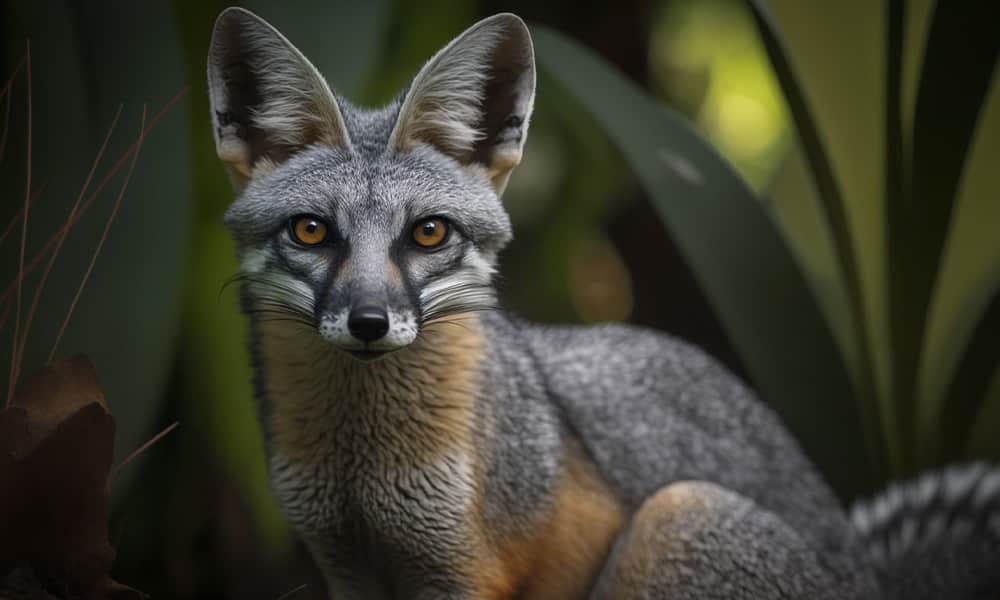I know the fact that you know about gray foxes.
If you’re interested in Costa Rica’s wild creatures enough to read an article entitled ‘Meet the Gray Fox,’ you know that … Gray foxes climb trees! That’s right, they’re the only member of the dog family that readily joins the monkeys in the treetops.
Gray foxes climb trees for two main reasons – to get something to eat and to not get eaten. Gray foxes are omnivores, eating a wide variety of items including rodents, rabbits, reptiles, carrion, grasses and fruits. Sometimes they’ll grab the fruit that’s fallen from a tree and sometimes they’ll do the grocery shopping themselves, climb the tree and pick the shiniest specimen up in the branches.
Being a small creature, coming in at about 20 inches long and 9 pounds, there are plenty of larger creatures that would happily make a gray fox into a meal. A fox that’s tucked away in a tree a few meters above the forest floor isn’t getting eaten by a coyote.
Folks who study gray fox anatomy believe the gray fox has two anatomical features that are adaptations for their partially arboreal lifestyle:
1) They have semi-retractable claws (an adaptation to keep the claws sharp for climbing)
2) Their forearms have wide rotational mobility (for gripping trees). Which I translate to – their little fox bodies are designed for climbing.
I infrequently encounter gray foxes in the wild while checking camera traps. I’ve only seen them in Guanacaste and even though they live their famously tree-dwelling lifestyle, I’ve never seen one climb a tree. My usual encounters are of the normal wildlife sighting variety – I see something move, I think ‘Neat! A gray fox!´, it sees me, and then runs away.
I record gray fox videos with my camera traps more frequently than I see them in person, but a gray fox video is still a rare video. I’m not sure if they are more common along the coast of Guanacaste than inland, but the two properties where I recorded the most fox videos included coastline. I’ve had good luck with gray foxes responding to strong scents placed in front of camera traps. They enjoy rolling around in anything with a strong stink ranging from Calvin Klein perfume to ocelot poop.
Besides Guanacaste, another gray fox hotspot in Costa Rica seems to be Monteverde. One of my wildlife books references a lot of research done with gray foxes in Monteverde and a quick search of social media shows a bevy of adorable gray fox photos from the area.
One of my favorite camera trap videos of all time is of a gray fox peering over a cliff, looking at the ocean at sunrise. It’s only a few seconds long, but it seems to show the fox enjoying Costa Rica’s beauty as much as I do. I’ll make it the first clip in the video below. Enjoy!
About the Author
Vincent Losasso, founder of Guanacaste Wildlife Monitoring, is a biologist who works with camera traps throughout Costa Rica. Learn more about his projects on facebook or instagram. You can also email him at: vincent@guanacastewildlifemonitoring.com






